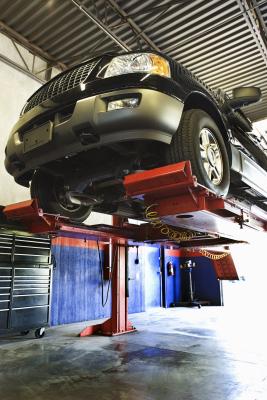
Torqueflite is the model name given to the Chrysler corporation's automatic three-speed transmission, which was debuted all the way back in 1956. Since then, the models have grown more advanced and the technology has progressed; gradually becoming more reliable and high-performance. Nevertheless, they also had their flaws. If you own now a car with a Chrysler Torqueflite transmission, there are a few things you should look and listen out for.
Visually inspect the pan gasket, shifter shaft seal or the front seal for any leaks. These are most likely due to general wear and tear or the effects of heat. The speedometer gear and extension housing seals may also be prone to leaking when the output shaft is turning. For these faults you should bring it to a mechanic.
Listen for specific noises which could give you an indicator about issues. Examples include a strange buzzing or whirring noise, which may indicate that your high-mileage torque converter has to be replaced. While audible clunks or bangs during operation may indicate that your transmission is suffering from a worn output shaft support bearing. Such is the complex nature of the transmission system that, once again, these issues should be referred to a mechanic to see if it should be replaced.
Test your gears. If second gear is slipping — eventually leading to no second gear engagement at all — then the kickdown band is likely out of adjustment, worn out, or broken. Take the vehicle to a garage in this case; depending on the severity of the damage, this may require replacement of the kickdown band.
Put the transmission in drive and hold the brake on to keep the car stationary in freezing conditions. This circulates fluid through the converter and warms it quicker, negating the problems which vehicles often suffer from during a cold snap. This acts to warm the mechanisms and allow normal operation in sub-zero conditions.